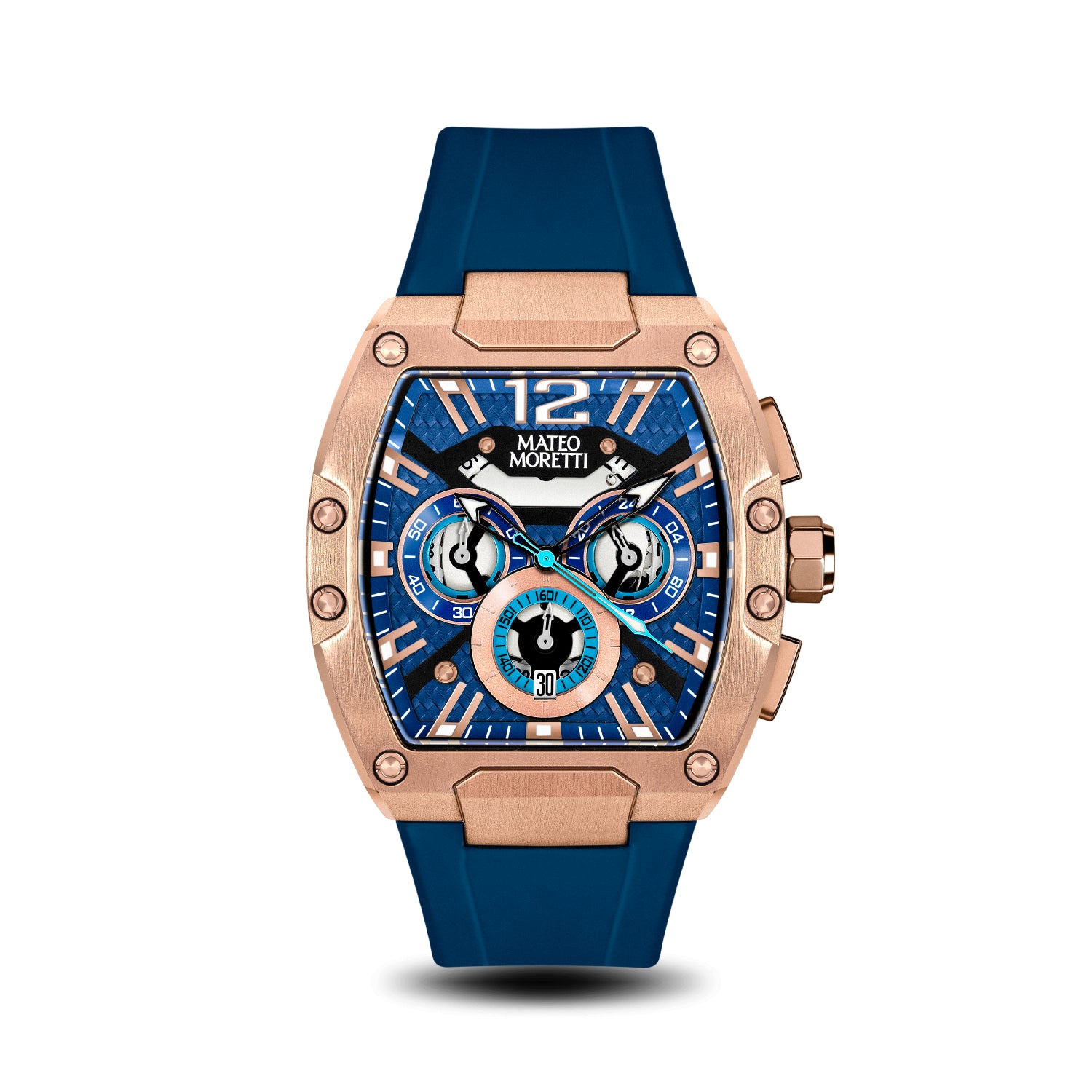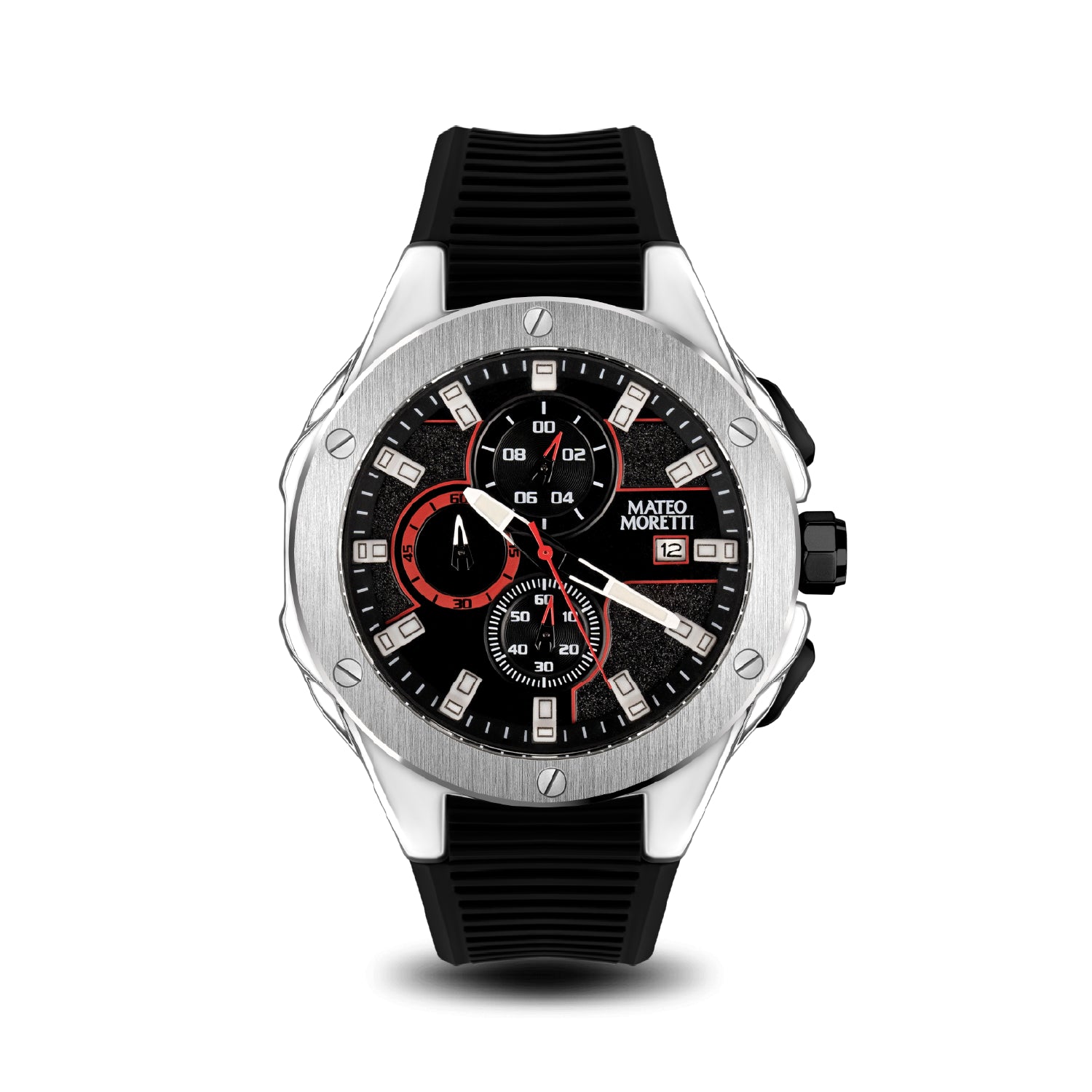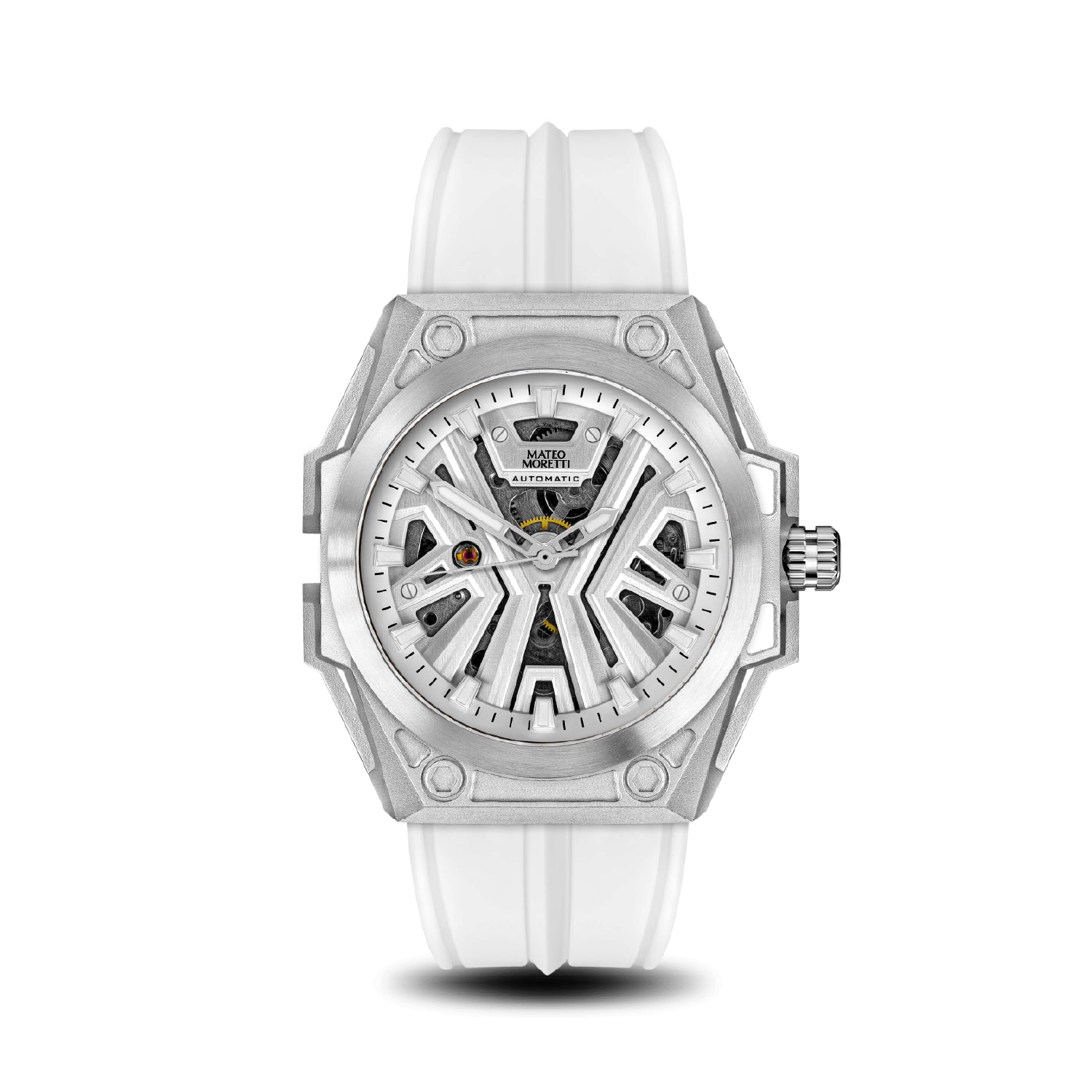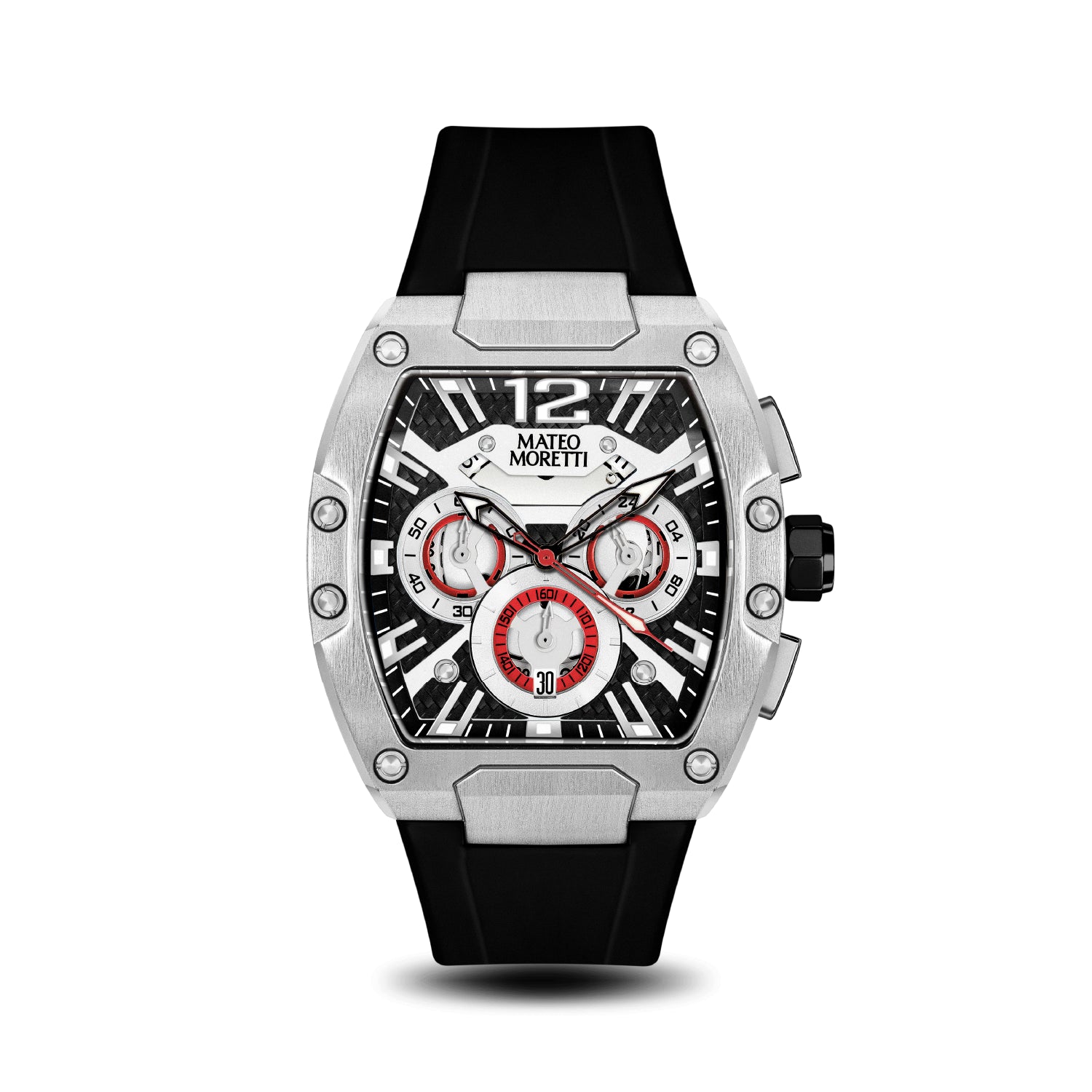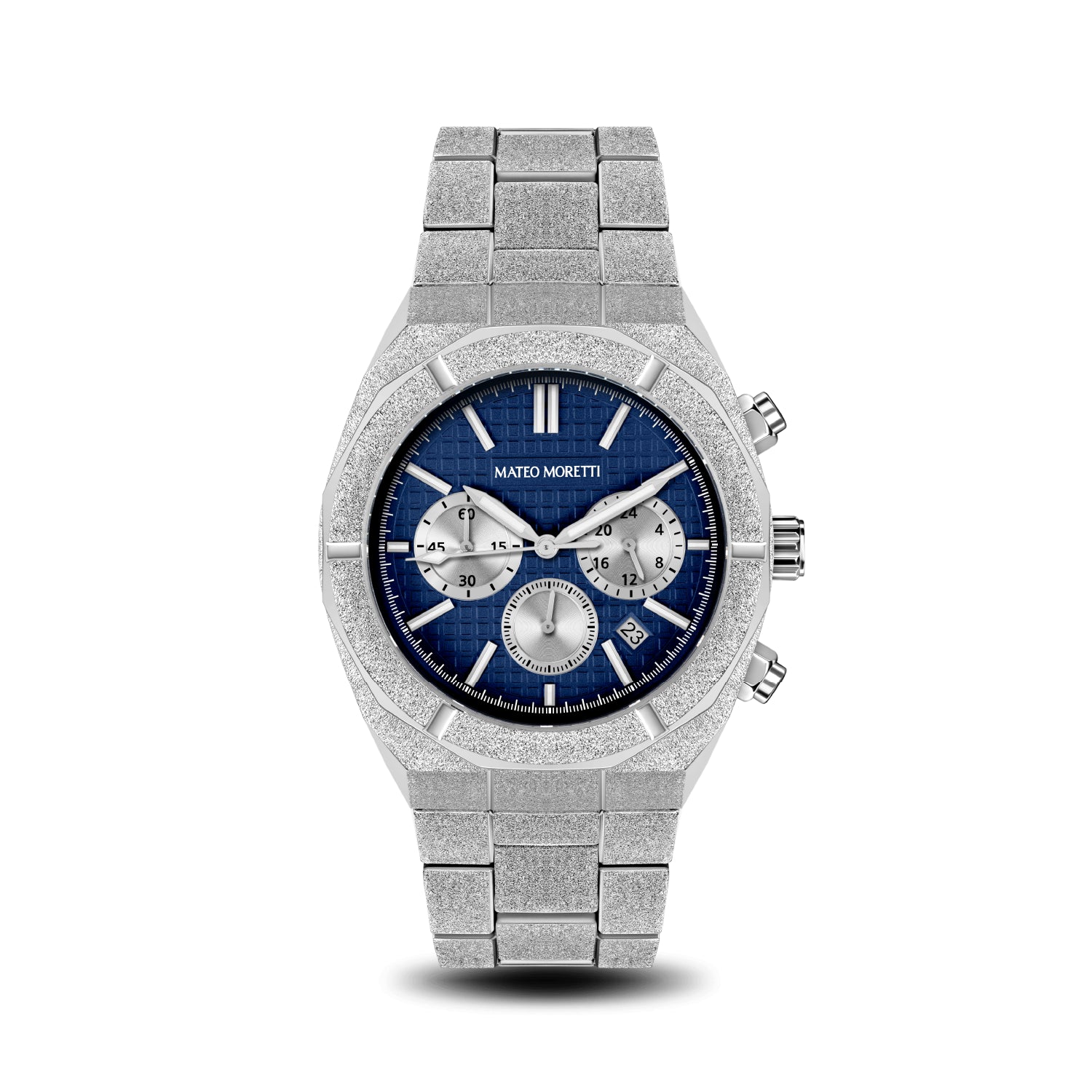Caring for a luxury watch involves regular gentle cleaning, proper storage, and routine professional maintenance to keep it running perfectly for decades. Luxury timepieces are precision instruments that require a bit of attention and common-sense care. By following these ten essential watch care tips – from cleaning and handling to servicing – you can maintain your treasured Mateo Moretti timepiece’s appearance and accuracy for many years to come.
1. Clean Your Watch Regularly and Gently
Dirt, dust, and sweat can accumulate on your watch and affect both its look and performance. Wipe your watch down with a soft, lint-free cloth after each wear to remove oils or debris. For a deeper clean on water-resistant models, use a slightly damp cloth or a soft brush with mild soapy water (never hot water) – but avoid submerging the watch unless it’s a dive-rated piece. Do not use harsh chemicals or household cleaners on your luxury watch, as these can damage gaskets, finishes, or leather straps. Always dry the watch thoroughly with a soft cloth afterward. Keeping your watch clean not only maintains its shine but also prevents debris from sneaking into the case and harming the movement.
2. Wind and Use Your Watch Properly
If your watch is mechanical (hand-wound or automatic), regular use or winding is important to keep its movement healthy. Manual-wind watches should be wound gently at the same time each day (or per the manufacturer’s guidelines) to keep the gears lubricated and running smoothly. Automatic watches self-wind through wear; try to wear yours for at least 8 hours a day or invest in a quality watch winder to keep it running when not on your wrist. This consistent motion prevents the internal oils from drying out. However, avoid over-winding a manual watch – stop when you feel resistance to prevent damage. And whenever setting or winding, be gentle with the crown and never force it if you encounter resistance.
3. Store Your Watch Properly
When you’re not wearing your timepiece, proper storage is key. Always keep your watch in a clean, dry place away from extreme temperatures or humidity. The best option is to use the original watch box or a dedicated watch case, which provides padded protection and keeps the watch secured in place. Storing a watch loosely in a drawer or on a hard surface can lead to scratches on the case or crystal. If you have an automatic watch you wear infrequently, consider a watch winder to keep it wound and ready. Also, store watches away from direct sunlight – prolonged UV exposure can fade dials and straps, and heat can shorten battery life.
4. Avoid Exposure to Magnets
Modern life surrounds us with magnetic fields – from smartphones and tablets to speakers and handbag clasps. Magnetism is a hidden enemy of mechanical watches, as strong magnetic fields can disrupt the movement’s accuracy or even stop the watch. Keep your timepiece away from magnets and electronic devices whenever possible. For example, don’t rest your watch directly on top of your laptop or near a magnetic clasp in a bag. Prolonged close exposure can magnetize the steel components inside a watch, causing it to run fast, slow, or erratically. If you suspect your watch has become magnetized (common signs are it suddenly runs very inaccurately), a professional watchmaker can demagnetize it relatively easily.
5. Keep Away from Extreme Temperatures
Dramatic heat or cold can wreak havoc on a fine watch. High heat can dry out the lubricating oils inside a mechanical movement and may cause certain components to expand or warp. On the other extreme, very cold temperatures can cause condensation to form under the crystal or make the metal parts contract. Avoid leaving your watch in direct sunlight for hours (for instance, on a hot car dashboard or windowsill) and never wear it in a sauna or hot tub. Likewise, if you’ll be in freezing conditions, it’s wise to leave your most precious watch safely at home – sudden temperature changes (like coming into a warm room after being out in the cold) could lead to moisture intrusion.
6. Be Careful Around Water
Water can be deadly for a watch that isn’t designed for it. Always know your watch’s water-resistance rating and respect its limits. If your watch is only splash-proof (e.g. 30m or 50m rated), keep it away from showers, swimming pools, and definitely the ocean. Even higher ratings have limits – for example, 100m water resistance is generally the minimum for swimming or snorkeling, and for serious diving you’d want 200m or more. Remember that water resistance isn’t permanent: the seals and gaskets that keep moisture out can wear down over time. It’s smart to have them checked or pressure-tested annually if you regularly expose the watch to water. Also, avoid pressing buttons or pulling out the crown when your watch is wet, as this can let water in. If your watch does get water inside (fogging under the crystal is a telltale sign), take it for service immediately. Watches with leather straps should be kept dry – water can weaken and discolor leather very quickly.
7. Service Your Watch on Schedule
Just like a high-performance car, a fine mechanical watch needs periodic maintenance to stay in top condition. Over time, the oils that lubricate the movement can break down, and tiny parts can wear. Most watch manufacturers recommend a full service every 3 to 5 years for luxury timepieces. Regular servicing by a professional watchmaker will involve disassembling the movement, cleaning all the parts, replacing worn components or gaskets, re-lubricating, and calibrating the timekeeping. Sticking to this schedule prevents problems before they start. It might seem costly or inconvenient, but routine servicing can dramatically extend your watch’s lifespan and ensure it keeps accurate time.
8. Avoid Shocks and Impacts
Even though many luxury watches are built to be robust, they are not indestructible. Sudden shocks or heavy vibrations can knock the delicate movement out of alignment or even crack the crystal. It’s wise to remove your watch during high-impact activities – for example, heavy weightlifting, contact sports, or using power tools and machinery. Be mindful not to bang your watch against hard surfaces like door frames or tabletops during everyday wear. Take care with the crystal (glass) especially; a hard knock can scratch or shatter it. Many modern watches use sapphire crystals which are very scratch-resistant but can chip or crack upon strong impact.
9. Care for the Strap or Bracelet
Don’t neglect the part of the watch that secures it to your wrist. Leather straps in particular require some care: keep them dry and avoid exposing them to perfumes, colognes, or oils which can deteriorate the leather. If a leather band does get moist (from sweat or a splash), blot it dry as soon as possible and let it air out. You can occasionally apply a leather conditioner to keep it supple, but avoid over-saturating it. For metal bracelets, clean them periodically by wiping with a soft cloth. Dirt and sweat can build up between links, so every now and then give the bracelet a gentle wash in mild soapy water (if the watch is water-resistant) or use a soft toothbrush to carefully scrub between links. Always fully rinse off any soap residue and dry the bracelet thoroughly. For rubber or fabric straps, a quick rinse in fresh water after exposure to sweat or salt water will keep them from developing odors or degrading.
10. Trust Only Professional Servicing and Repairs
A luxury watch is a complex device, and opening it up is not a DIY job. You should never attempt to pop open the case back, remove the movement, or regulate the timekeeping yourself unless you are a trained watchmaker. Doing so risks introducing dust or moisture into the finely tuned movement and can easily do more harm than good. Instead, entrust repairs and battery changes to professionals. Authorized service centers or reputable watchmakers have the proper tools and expertise to handle your watch without damaging it. They will also reseal and pressure-test the watch to restore its water resistance after opening. Even tasks that seem simple – like sizing a bracelet or changing a strap – should be done with the correct tools to avoid scratching the watch.



